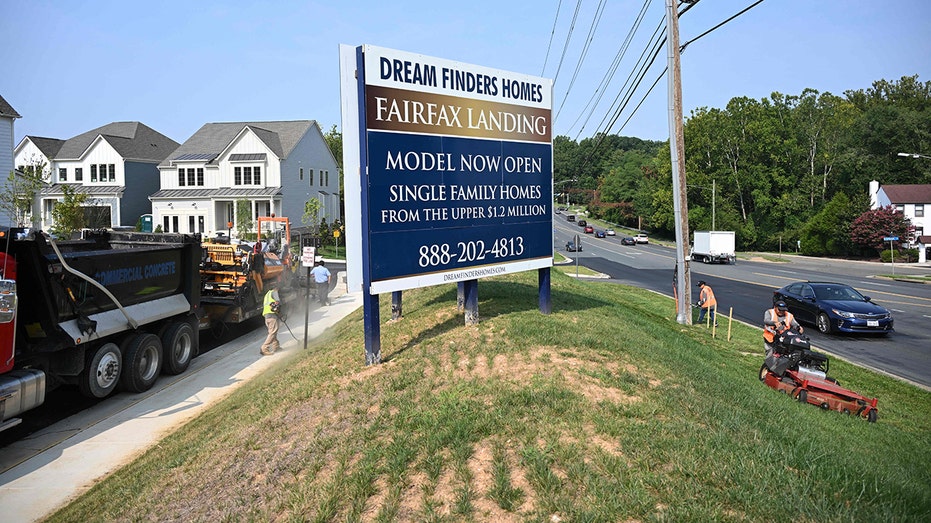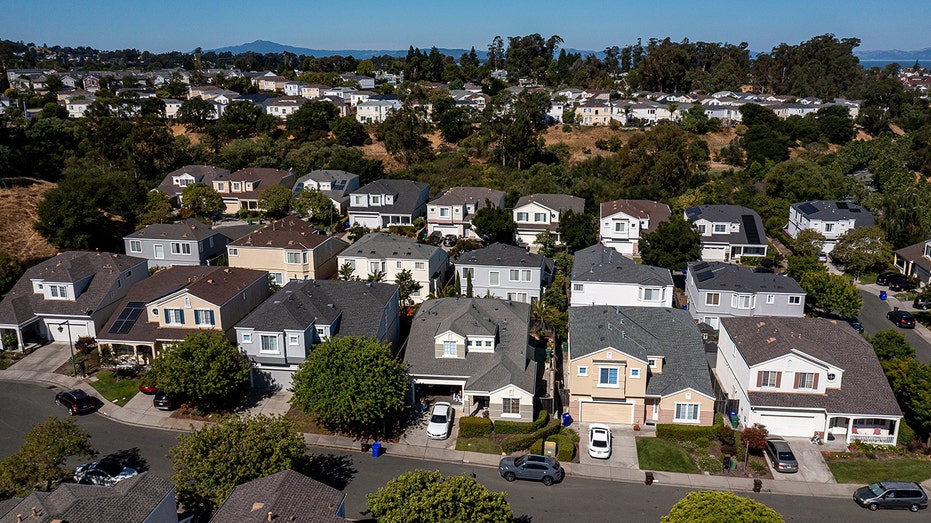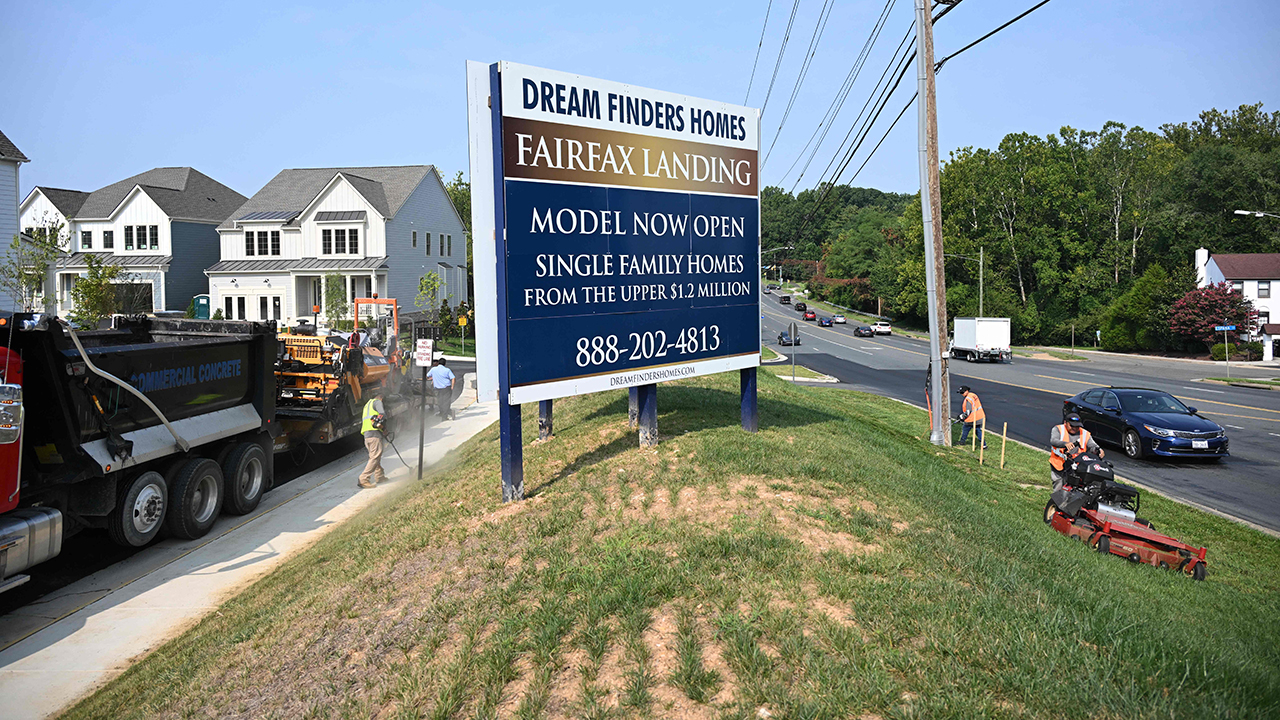Why can't you find a house for sale?
US has housing shortage crisis. What's to blame?
US housing needs more 'yes in my backyards' policy: Tobin
National Association of Home Builders CEO Jim Tobin explains how local governments have tied up housing construction projects.
Prospective homebuyers across the U.S. are facing a chronic shortage of available houses that has fueled a nationwide affordability crisis – and there is no relief in sight.
The combination of high demand and low supply has sent home prices soaring to near-records, even as would-be buyers grapple with the highest mortgage rates in decades.
Estimates on the nation's housing deficit vary, but most experts believe it's somewhere in the millions. The most recent projections from Freddie Mac put the country's housing deficit around 3.8 million units.
"The main issue is the fact that inventory is so, so low," Susan Wachter, professor of real estate at the Wharton School of the University of Pennsylvania, told FOX Business. "That’s just not going to resolve until mortgage rates come down significantly."
High rates hit the market
The Federal Reserve began aggressively hiking interest rates in March 2022 as it tried to tame runaway inflation. In the span of 16 months, interest rates surged from near zero to a range of 5.25% to 5.5%, the highest level since 2001.
That tightening campaign helped to send mortgage rates soaring above 7% last year for the first time in nearly two decades. Rates have been slow to retreat, notching a new high at the end of August.
MORTGAGE CALCULATOR: SEE HOW MUCH HIGHER RATES COULD COST YOU
Although rates on the popular 30-year fixed mortgage fell slightly to 7.12% this week, that remains well above both the 5.89% rate recorded one year ago and the pandemic-era lows of 3%.
"It’s the whiplash of low rates being followed by high rates, which means that those homeowners with those low rates are locked in," Wachter said. "That’s what’s giving us this extremely tight mortgage market."
Such a sharp rise in rates has created a "golden handcuff" effect in the housing market: Sellers who locked in a record-low mortgage rate of 3% or less during the pandemic began have been reluctant to sell, leaving few options for eager would-be buyers.
THE 4 US CITIES FACING BIGGEST HOUSING SHORTAGE
The number of available homes on the market at the end of August was down by more than 9% from the same time last year and down a stunning 45% from the typical amount before the pandemic began in early 2020, according to a recent report from Realtor.com.
"What we’ve seen a lot is that the existing homeowners are saying, ‘I might be able to sell my house for $500,000, however, where do I go from here?'" Jeff Taylor, CEO of Mphasis Digital Risk and a Mortgage Bankers Association board member, told FOX Business. "So, what they’re doing is they’re saying, 'I’ll fix up my house and maybe stay in my house.' It doesn’t put a house on the market."

Maintenance workers mow the lawn in front of a housing development sign near new homes in Fairfax, Virginia, on Aug. 22, 2023. (Andrew Caballero-Reynolds / AFP / Getty Images)
Economists predict that mortgage rates will remain elevated through the end of 2023 and that they will only begin to fall once the central bank starts cutting rates. Even then, rates are unlikely to return to the lows seen during the pandemic.
Most homeowners say they are nearly twice as willing to sell their home if their mortgage rate is 5% or higher, according to a recent Zillow survey. Currently, about 80% of mortgage holders have a rate below 5%.
HOUSING MARKET MAY BE TRAPPED IN PROLONGED FREEZE
"We’re going to need to see a several-hundred-point decrease before that inventory starts rising," Wachter said. "At that point, we’ll see a normal market. But we’re a ways before that."
Not In My Backyard
Adding to the trouble is that builders have been slow to get new construction on the market. New listings are being added at the slowest pace on record because many houses are still under construction.f
On top of that, new construction tends to be more expensive for a number of reasons, including issues with zoning, regulation and land availability, according to Wachter.

Homes in Hercules, California, are shown on Aug. 16, 2023. (David Paul Morris / Bloomberg / Getty Images)
BIDEN KEEPS CRUSHING AMERICAN DREAM OF OWNING HOME
That opposition to new developments in suburban communities – dubbed "NIMBYism," which means "Not In My Backyard" – is restricting new construction in many neighborhoods.
"Developers are out there marshaling what they can," Wachter said. "But they will tell you getting land to build on is a real barrier to supplying homes."
The housing shortage has only served to boost consumer demand, which is keeping prices uncomfortably high despite the highest mortgage rates in two decades.
A long time coming
Part of the problem dates to the 2008 financial crisis.
Before the housing market crashed, the 2000s experienced a substantial increase in new housing supply, boosted by a rush of demand amid low mortgage rates and new subprime mortgages offered to borrowers with low credit scores.
New single-family housing supply soared to 1.7 million in 2005 – the highest construction level in nearly 50 years. But that number fell sharply after the housing bubble burst to 442,000 in 2009. It has remained low in the years since, with a consistent gap in homebuilding.
In fact, from 1968 to 2008, there was only one year in which fewer new housing units were built than in 2017, despite a resurgence in demand in a growing economy.
GET FOX BUSINESS ON THE GO BY CLICKING HERE
"It’s a 13-year question," Taylor said. "If you look from 2010 to 2019, we under-built 6 million houses. The financial crisis, millennials living at home – for all of those reasons, we did not build at the pace the demand should have been because it just wasn’t perceived to have been there."
Even more concerning is the dwindling supply of entry-level homes.
During the 2000s, new entry-level housing supply averaged 150,000 units per year, compared to 207,000 during the 1990s. Those figures declined further in the wake of 2008, tumbling to an average of 55,000 units per year, according to Freddie Mac.
A 2021 study published by the National Association of Realtors argues there has been a decades-long gap in investment in the U.S. and that the nation faces "an acute shortage of available housing, an ever-worsening affordability crisis, and an existing housing stock that is aging and increasingly in need of repair – all to the detriment of the health of the public and the economy."





















